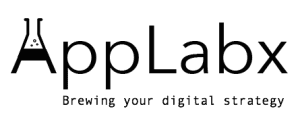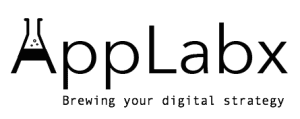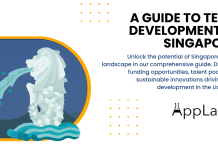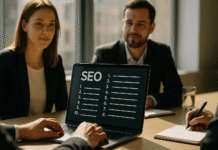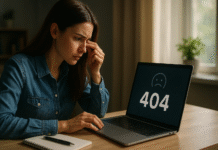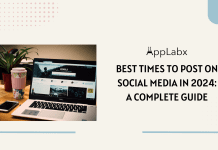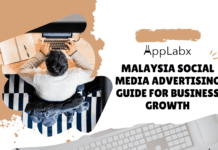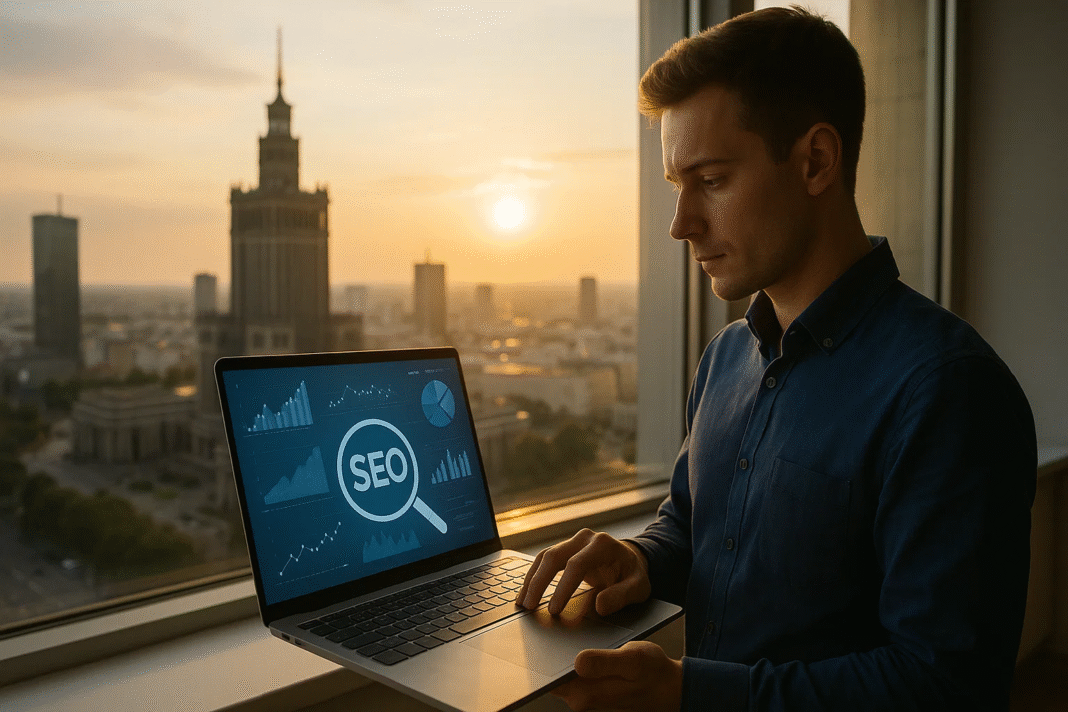Key Takeaways
- AI-driven search, voice assistants, and generative AI are redefining SEO strategies in Poland for 2025.
- Localized, mobile-first, and E-E-A-T-focused optimization is critical to capture Poland’s competitive e-commerce and search market.
- Businesses must integrate conversion optimization, regulatory compliance, and advanced content strategies to achieve long-term SEO growth.
In 2025, Poland stands at the forefront of a rapidly evolving digital economy, where search engine optimization (SEO) has become one of the most critical drivers of visibility, trust, and growth for businesses competing in an increasingly sophisticated online marketplace. The Polish digital landscape has matured at an unprecedented pace, fueled by a tech-savvy population, the dominance of Google, explosive e-commerce growth, and a nationwide embrace of artificial intelligence. Understanding how SEO strategies are transforming in Poland is no longer optional for brands seeking to achieve a competitive edge—it is a fundamental requirement for digital survival.
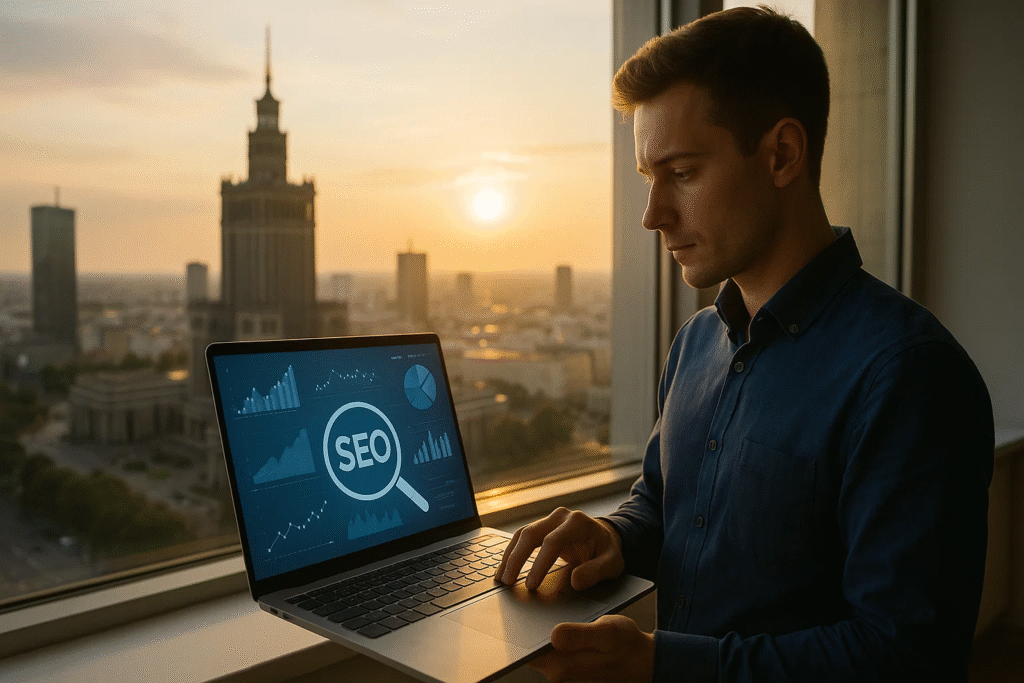
The Polish online ecosystem today is defined by high internet penetration, an impressive 140% mobile subscription rate, and a consumer base that is both informed and research-driven. With internet usage now nearing full saturation, growth in 2025 is no longer about simply acquiring new users; rather, it is about deepening engagement, optimizing the buyer journey, and capturing attention in a marketplace where every click matters. This environment creates unique opportunities for businesses that can master SEO while adapting to local cultural, linguistic, and technological factors.
At the center of Poland’s SEO transformation is the unparalleled dominance of Google, which commands over 90% of the search engine market share and 94.66% on mobile devices. This near-monopoly demands that businesses align their entire SEO strategy with Google’s ranking algorithms, best practices, and evolving emphasis on quality signals such as E-E-A-T (Expertise, Experience, Authoritativeness, and Trustworthiness). As Google rolls out AI-driven features, including AI Overviews, and increasingly integrates generative AI into search experiences, Polish businesses face a new reality: search visibility is now defined not only by keywords and backlinks but also by structured, authoritative, and intent-driven content that can be surfaced within AI summaries.
Artificial intelligence is particularly transformative in Poland. In 2025, 63% of Polish companies report active adoption of generative AI, outpacing global peers in the United States, the UK, and Spain. AI-driven tools are now shaping how content is created, optimized, and distributed, while also introducing a new focus on AI Search Optimization (AISO)—a specialized discipline designed to help websites appear within AI-generated results. Businesses that are quick to integrate AI into their SEO workflows—using machine learning to conduct keyword research, create predictive analytics, optimize content formats, and enhance technical SEO—are establishing a measurable competitive advantage.
Parallel to these technological advancements is the explosive growth of Poland’s e-commerce market. Valued at $22 billion in 2023 and projected to grow to $31 billion by 2027, the e-commerce sector represents an enormous opportunity for brands to capture organic traffic. However, despite 93% of Polish internet users making online purchases, more than half of Polish e-commerce websites are experiencing stagnation or even decline in their organic traffic. This disconnect highlights a significant untapped potential for companies that are willing to invest in SEO excellence, including optimizing for voice search, mobile-first experiences, and cross-border opportunities.
Localization and cultural adaptation are central to SEO success in Poland. The Polish language’s grammatical complexity, with its extensive use of diacritics and declension, presents challenges for global brands relying on generic keyword strategies. Native expertise has become indispensable for crafting search-optimized content that resonates authentically with Polish users. Moreover, the growing prominence of local SEO—driven by omnichannel shopping behaviors and a strong preference for local recommendations—has made accurate Google Business Profile optimization, review management, and hyper-local targeting indispensable.
In 2025, SEO in Poland is not merely a technical discipline; it is a multi-faceted strategy that intersects with AI innovation, conversion optimization, and regulatory compliance. Brands must account for strict data privacy laws under GDPR and adapt to the Omnibus Directive, which requires transparency around pricing, reviews, and search rankings. These regulations are shaping how SEO professionals plan and execute campaigns, ensuring that visibility is built on a foundation of trust.
This comprehensive analysis of the state of SEO in Poland in 2025 explores the most pressing trends, opportunities, and challenges shaping the digital market. From the rise of AI-powered search to the dominance of mobile-first strategies, from e-commerce growth to cultural and linguistic SEO nuances, this report provides an in-depth roadmap for businesses seeking to thrive in one of Europe’s most competitive and rapidly changing online ecosystems. By understanding these forces and strategically adapting to them, organizations can position themselves to capture visibility, drive conversions, and build sustainable digital leadership in Poland’s dynamic marketplace.
In the sections that follow, this blog delves into the essential elements of Poland’s SEO landscape in 2025, offering actionable insights for brands, marketers, and digital professionals who aim to navigate this evolving terrain and secure a dominant online presence.
The State of SEO in Poland in 2025: Navigating a Dynamic Digital Landscape
- Poland’s Digital Foundation: Connectivity and Adoption in 2025
- Digital Transformation Market Growth
- Search Engine Landscape: Dominance and Diversification
- The AI Revolution in Polish Search
- E-commerce Dynamics and SEO Imperatives
- Cross-Border Shopping Trends
- Linguistic and Local SEO Nuances
- SEO Software and Tools Adoption
- SEO Performance Metrics and ROI
- Regulatory Landscape and Ethical Considerations
- Strategic Recommendations
1. Poland’s Digital Foundation: Connectivity and Adoption in 2025
1. Overview of Poland’s Digital Ecosystem in 2025
- Poland’s digital environment has matured significantly, becoming one of the most advanced in Central and Eastern Europe.
- By 2025, the country exhibits:
- Broad connectivity across urban and rural areas.
- An almost saturated internet user base, shifting focus from user acquisition to engagement optimization.
- Strong mobile-driven usage patterns, underpinned by high-speed broadband adoption.
2. Internet Penetration and User Behavior
- Key Insights
- Internet Users: 34.5 million, representing 89.8% of the total population.
- Trend: A decrease of 310,000 (-0.9%) from 2024, signalling that future growth will rely on engagement strategies rather than expanding reach.
- Behavioral Shift:
- Businesses need to focus on deeper engagement, retention, and personalized user experience rather than mass audience expansion.
- SEO strategies must emphasize high-value content tailored to intent-rich queries.
3. Mobile Connectivity and Broadband Dominance
- Mobile Ecosystem:
- Connections: 53.7 million active mobile connections, equivalent to 140% of the population.
- Growth: +633,000 (+1.2%) from 2024.
- Broadband Connectivity: 97.1% of mobile connections are 3G/4G/5G-enabled.
- Impact on SEO:
- Mobile-first indexing becomes paramount due to mobile reliance.
- Sites must ensure fast-loading, mobile-optimized, and interactive experiences.
4. Speed and Infrastructure Performance
- Speed Metrics (Jan 2025):
- Median Mobile Internet Download Speed: 69.09 Mbps (+64% YoY).
- Median Fixed Internet Download Speed: 178.10 Mbps (+27.8% YoY).
- Implications for SEO:
- Improved speeds support richer content formats (videos, interactive infographics, advanced e-commerce experiences).
- Technical SEO can now fully leverage Core Web Vitals optimization without the same bandwidth limitations of prior years.
5. Social Media Engagement and Market Dynamics
- User Base:
- 29 million social media accounts (75.6% of the population).
- Platform Insights:
- YouTube: 29 million users (dominant platform).
- Facebook: 18.7 million users.
- SEO Perspective:
- Search visibility strategies must integrate with social ecosystems for synergistic brand exposure.
- Content amplification through YouTube SEO, Facebook optimization, and influencer partnerships is increasingly critical.
6. Growth Drivers and Competitive SEO Landscape
- Digital Transformation:
- Market size: USD 83.31 billion (2025)
- CAGR (2025–2030): 11.71%
- Competitive Factors:
- With internet saturation, growth stems from:
- Enhanced user experience (UX)
- Hyper-personalized content
- Data-driven decision-making using AI and advanced analytics
- With internet saturation, growth stems from:
- Strategic Priorities:
- Companies must pivot to retention marketing, customer loyalty, and AI-driven content personalization to compete effectively.
Key Digital Metrics for Poland – 2025
| Metric | Value |
|---|---|
| Total Internet Users (Jan 2025) | 34.5 million |
| Internet Penetration Rate | 89.8% |
| Change in Internet Users (YoY) | -0.9% (-310,000) |
| Total Mobile Connections | 53.7 million |
| Mobile Connections as % of Population | 140% |
| Broadband Mobile Connections | 97.1% |
| Median Mobile Download Speed | 69.09 Mbps |
| Median Fixed Download Speed | 178.10 Mbps |
| Total Social Media Users | 29.0 million |
| Social Media Penetration Rate | 75.6% |
| Digital Transformation Market Size (2025) | USD 83.31 billion |
| CAGR (2025-2030) | 11.71% |
7. SEO Opportunities in Poland 2025
Emerging Focus Areas:
- Voice Search Optimization: Due to increased mobile usage and fast connections.
- AI-Powered Insights: Predictive analytics for anticipating user intent.
- Localized Strategies: Targeting Poland’s urban hubs (Warsaw, Kraków, Wrocław) with geo-specific campaigns.
Matrix – SEO Strategic Focus Areas vs Market Maturity
| Focus Area | 2025 Priority Level | Key Tactics |
|---|---|---|
| Mobile Optimization | High | Progressive Web Apps, Core Web Vitals |
| AI-Driven SEO | High | Predictive ranking, advanced personalization |
| Local SEO | Medium-High | Google Maps SEO, hyper-local content |
| Content Experience | High | Interactive, visual-rich, long-form expertise |
Conclusion
In 2025, Poland’s SEO landscape transitions from audience acquisition to deep engagement. Businesses and SEO professionals must align with AI-driven optimization, mobile-first strategies, and competitive content differentiation to succeed in a digitally mature, highly competitive market.
2. Digital Transformation Market Growth
1. Digital Transformation Market Growth and Its Impact on SEO
- Market Expansion
- Poland’s digital transformation market is projected to grow from USD 83.31 billion in 2025 to USD 144.94 billion by 2030, registering a CAGR of 11.71%.
- This growth underscores an accelerated modernization of public services, business models, and online infrastructures.
- Key Catalysts of Growth
- The “Digital Poland” Initiative
- Expands broadband access nationwide.
- Promotes digital literacy among all demographics.
- Encourages technological innovation across industries.
- Private Sector Adoption
- Significant investments in cloud computing, big data analytics, AI, and automation.
- Shift from traditional business models toward data-driven, digitally integrated operations.
- The “Digital Poland” Initiative
- Implications for SEO Strategies
- SEO is no longer an isolated function but an integral part of the digital ecosystem.
- Integration Trends:
- Big Data-Driven SEO: Utilizing advanced analytics for deeper insights into user behavior.
- AI-Enhanced Optimization: Predictive SEO approaches that anticipate intent and personalize results.
- Technical SEO for Cloud: Optimizing performance and indexing on cloud-native infrastructures.
- Collaborative Focus:
- SEO teams increasingly work alongside IT, data science, cybersecurity, and BI teams.
- Alignment with company-wide digital transformation goals is now essential.
2. Key Statistics – Poland’s Digital Transformation (2025–2030)
| Indicator | 2025 Value | 2030 Projection | CAGR (2025–2030) |
|---|---|---|---|
| Market Size (USD) | 83.31 billion | 144.94 billion | 11.71% |
| Primary Growth Drivers | Digital Poland Program, Cloud, AI, Big Data | – | – |
| Key SEO Implications | Data-driven strategies, AI integration, UX focus | – | – |
3. Digital Skills Landscape: Opportunities and Challenges
- Current Challenges
- Skills Gap:
- Shortage of ICT professionals impacts enterprise-level SEO execution and digital adoption.
- Rural vs Urban Divide: Urban areas show faster adaptation; rural regions lag behind.
- Low STEM Participation:
- EU reports emphasize the urgent need for STEM education reform and promotion.
- Skills shortages affect cybersecurity, advanced analytics, and AI application.
- Skills Gap:
- Public Sentiment and Opportunities
- Consumer Mindset:
- 78% of Polish citizens acknowledge that digitalization improves quality of life, indicating a digitally receptive market.
- Untapped Potential:
- Despite robust infrastructure, businesses often lack internal expertise to leverage advanced SEO.
- This opens opportunities for specialized SEO agencies, consultancies, and training providers.
- Automation and Tools:
- High demand for automated SEO platforms and user-friendly analytics dashboards to support businesses with limited internal skill sets.
- Consumer Mindset:
4. SEO Maturity Matrix in Poland (2025)
| Dimension | Current State (2025) | Opportunity Area |
|---|---|---|
| Technical SEO Expertise | Moderate | Training, external specialists |
| AI & Automation Adoption | Emerging | Advanced AI-driven SEO tools |
| Data Integration | Limited | Big data pipelines for SEO |
| Cross-functional Collaboration | Low to moderate | Joint initiatives with IT & BI |
| Rural-Urban SEO Gap | Significant disparity | Localized and geo-specific SEO |
5. Strategic Recommendations for SEO Stakeholders
- For Businesses
- Prioritize staff development in digital and analytical skills.
- Partner with specialized SEO consultancies for AI-driven, cloud-aligned strategies.
- Focus on consumer experience optimization to leverage the digitally ready population.
- For Agencies and Consultants
- Offer comprehensive SEO training to bridge internal skills gaps.
- Develop turnkey solutions combining AI, automation, and analytics.
- Target underserved sectors and rural markets with localized campaigns.
- For Policymakers
- Expand educational incentives for STEM disciplines.
- Facilitate public-private partnerships to accelerate digital literacy.
Chart: Projected Growth of Digital Transformation Market in Poland (2025–2030)
Market Size (in USD billions)
160 | *
140 | *
120 | *
100 | *
80 | *
60 |
----------------------------------------
2025 2026 2027 2028 2029 2030
Conclusion
The State of SEO in Poland in 2025 is shaped by an expanding digital transformation market, a technologically receptive population, and a critical shortage of internal digital expertise. These factors combine to create a competitive, innovation-driven environment where advanced SEO practices, AI integration, and cross-functional strategies will define market leaders.
3. Search Engine Landscape: Dominance and Diversification
1. Search Engine Market Dynamics in Poland (2025)
- Absolute Dominance of Google
- Google remains the uncontested leader in Poland’s search market, shaping the online behavior of the nation.
- Market Share Highlights (June 2025):
- Overall: 89.16% of all searches.
- Desktop: 81.45% (78.71% via google.com and 2.74% via google.pl).
- Mobile: 94.66%, emphasizing Google’s mobile-first ecosystem in Poland.
- Key Implications for SEO Professionals
- Hyper-Localization as a Success Factor:
- Focus on Polish-language keyword strategies that incorporate cultural and linguistic nuances.
- Use of .pl domains and content that mirrors Polish user intent.
- Mobile-Centric Optimization:
- Enhanced mobile site speed, structured data, and mobile-first design are no longer optional but critical.
- Hyper-Localization as a Success Factor:
2. Opportunities Beyond Google – Secondary Search Platforms
- While Google’s dominance is unassailable, secondary platforms still hold meaningful market share, especially within niche contexts:
Market Share Breakdown – June 2025
| Search Engine | Overall (%) | Desktop (%) | Mobile (%) |
|---|---|---|---|
| 89.16 | 81.45 (78.71 + 2.74) | 94.66 | |
| Bing | 6.43 | 13.46 | 1.23 |
| Yandex | 1.83 | 0.53 | 2.13 |
| DuckDuckGo | 1.59 | 1.56 | 1.63 |
| Yahoo! | 0.73 | 1.35 | 0.11 |
| Ecosia | 0.08 | N/A | 0.08 |
- Strategic Value of Diversification
- Even minor market shares translate into millions of searches due to Poland’s 34.5 million internet users.
- Enterprise Search Patterns:
- Corporate users frequently default to Bing, making it relevant for B2B sectors.
- Niche Market Opportunities:
- Optimizing for DuckDuckGo and Yandex can be advantageous for privacy-conscious users and segments connected to Eastern markets.
- SEO Recommendation:
- Businesses should reduce over-reliance on Google and consider a multi-platform approach, especially where competition is less intense.
3. Polish Search Behavior and Consumer Intent
- Research-Driven Consumer Behavior
- Key Findings:
- 36% of Polish users rely on price comparison tools weekly, almost double the global average (19.9%).
- This indicates price sensitivity and a culture of informed decision-making.
- Key Findings:
- Implications for Content Strategies:
- Comprehensive Buyer Journey Content:
- Detailed guides, reviews, FAQs, and comparison pages to support decision-making at every stage.
- Search Intent Diversification:
- Balance between informational content and transactional/product-focused content to satisfy research-heavy audiences.
- Comprehensive Buyer Journey Content:
4. Linguistic Complexities in Polish SEO
- Unique Language Challenges:
- Diacritics:
- Polish includes diacritical marks (ć, ń, ó, ś, ź, ż, ą, ę, ł).
- Search algorithms do not always equate diacritic and non-diacritic forms, making accurate usage essential.
- Declension:
- A single keyword can appear in multiple grammatical forms due to Poland’s case-based system.
- Long-tail and Conversational Queries:
- Users often search using complete sentences and natural language, frequently beginning with “how to”.
- Diacritics:
- Optimization Strategies:
- Keyword Variations:
- Develop content that includes all grammatical forms of critical keywords.
- Natural Language Processing:
- Focus on semantic SEO, optimizing for search intent rather than exact-match keywords.
- Local Expertise:
- Employ native Polish linguistic experts to ensure cultural and linguistic accuracy.
- Keyword Variations:
5. Insights Chart: Polish Search Engine Market (2025)
Market Share (%) - June 2025
100 ┤
90 ┤■■■■■■■■■■■■■■■■■■■■■■■■■■■■■■■■■■■■■■■■ Google 89.16%
80 ┤
70 ┤
60 ┤
50 ┤
40 ┤
30 ┤■■■■■ Bing 6.43%
20 ┤■ Yandex 1.83%
10 ┤■ DuckDuckGo 1.59% | ■ Yahoo! 0.73%
0 ┼──────────────────────────────────────────────
Conclusion
In 2025, Poland’s SEO landscape is defined by Google’s overwhelming dominance, a multilingual and culturally nuanced search environment, and a research-driven consumer base. To compete effectively, businesses must:
- Prioritize localized SEO strategies
- Integrate multi-platform optimization
- Develop linguistically precise, intent-driven, long-form content
These elements collectively enable brands to build trust and visibility in a sophisticated and highly competitive Polish digital market.
4. The AI Revolution in Polish Search
1. The Impact of AI Overviews (AIO) on Search Dynamics
- Redefining Click-Through Metrics
- The rollout of AI Overviews (AIO) in Poland has profoundly altered user behavior and organic search outcomes.
- Traffic Impact:
- Some industries have observed organic click-through rate reductions of up to 35% as AI-generated summaries deliver immediate answers without the need for additional clicks.
- Survey Findings – A Dual Impact
- 63% of surveyed organizations in 2025 reported a positive outcome from AIO in terms of traffic, visibility, or ranking improvements.
- Correlation with SEO Maturity:
- Businesses with advanced SEO practices were 3x more likely to benefit from AIO than those with immature SEO frameworks.
- Key Insights for SEO Professionals
- AIO acts as a content quality filter, rewarding:
- Structured, factually accurate, and authoritative content.
- Websites that embody E-E-A-T (Expertise, Experience, Authoritativeness, Trustworthiness).
- Strategic Shifts:
- Move beyond focusing solely on clicks; optimize content for inclusion within AI summaries.
- Develop clear, concise, and structured content that AI systems can interpret effectively.
- Zero-Click Search Reality:
- Adapt to a less-click environment, emphasizing visibility and authority even when direct clicks decline.
- AIO acts as a content quality filter, rewarding:
2. Rise of Generative AI (GenAI) in Poland and Its Implications
- Adoption Leadership
- Poland stands out as one of the global leaders in GenAI adoption:
- 63% of Polish companies actively use GenAI tools.
- This exceeds usage rates in the USA (41%), UK (48%), and Spain (40%).
- Poland stands out as one of the global leaders in GenAI adoption:
- AI Integration Trends (2025 Data)
- Full Implementation: 18% of companies (up from 5% in 2024).
- Partial Implementation: 32% of companies (compared to 20% global average).
- Budget Allocation: 42% of businesses have dedicated AI budgets.
- ROI Metrics: AI-integrated firms report 1.7x return on investment.
- AI Agent Adoption: 17% of companies use AI agents and multi-agent systems (global average: 13%).
- Competitive Landscape and Risks
- Gap in AI Visibility: 38% of Polish e-commerce businesses still fail to appear in AI-generated results.
- Opportunities for Early Adopters:
- Enhanced content creation, automated SEO optimization, predictive analytics, and competitive AISO (AI Search Optimization).
- Risks for Non-Adopters:
- Companies that do not adapt risk falling behind in visibility, conversions, and market relevance.
3. Strategic Applications of AI in SEO
- AI-Powered SEO Functions:
- Automated keyword clustering and predictive trend analysis.
- Content generation at scale with prompt engineering and editorial oversight.
- Technical SEO audits using machine learning.
- AI-driven personalization and UX enhancements.
- Emerging AISO (AI Search Optimization):
- Techniques designed specifically to optimize for AI-driven search engines and conversational search interfaces.
4. Voice Search and AI-Powered Shopping Trends
- Growing Voice Assistant Usage:
- 72% of Polish consumers use voice assistants (e.g., Alexa, Siri, Google Assistant) in their shopping journeys.
- 89% leverage AI-powered guidance during purchase decisions.
- Globally, 20.5% of users engage with voice search as of 2025, and Poland is at the forefront of this trend.
- Impact on SEO Strategy:
- Conversational Queries:
- Voice search is question-based and natural language-focused, requiring SEO strategies that prioritize semantic understanding over simple keyword matching.
- Content Optimization Approaches:
- Develop long-form, structured answers for frequently asked questions.
- Implement schema markup and structured data to improve eligibility for voice responses and AI-rich snippets.
- Build authority and trust with comprehensive topical content to align with AI assistants.
- Conversational Queries:
5. AI Adoption and SEO Readiness in Poland – 2025 Data Matrix
| Factor | Poland (2025) | Global Average | SEO Implication |
|---|---|---|---|
| GenAI Adoption | 63% | 41% – 48% | High early-adopter advantage |
| Full GenAI Implementation | 18% | 5% | Faster AI integration |
| AI Budget Allocation | 42% | 25% – 30% | Higher investment in AI-driven SEO tools |
| ROI from AI Investments | 1.7x | 1.3x | Superior competitive positioning |
| Companies Visible in AI Results | 62% | ~65% | Opportunity gap for 38% missing businesses |
6. Visual Representation – AI Overviews Impact in Poland (2025)
Percentage of Organizations Reporting AIO Impact
70 ┤ ■■■■■■■■■■■■■■■■■■■■■■■■■■ Positive Impact (63%)
60 ┤
50 ┤
40 ┤ ■■■■■ Negative/Neutral (37%)
30 ┤
20 ┤
10 ┤
0 ┼────────────────────────────────────────
Conclusion
By 2025, AI-driven search and generative technologies are transforming SEO in Poland from a traditional ranking and traffic game to a complex ecosystem centered on visibility, authority, and AI interpretability.
- Companies that invest in advanced AISO strategies, GenAI content, and voice-search optimization will enjoy a profound competitive advantage.
- Businesses that fail to adapt risk losing relevance as search behavior shifts toward zero-click AI-driven results.
5. E-commerce Dynamics and SEO Imperatives
1. The Expanding E-commerce Ecosystem in Poland
- Strong Market Growth and Digital Commerce Penetration
- Poland’s e-commerce sector has evolved into one of the fastest-growing markets in Central Europe, becoming an integral part of the retail ecosystem.
- Market Value Projections:
- Estimated market value in 2023: USD 22 billion.
- Forecasted value by 2027: USD 31 billion, reflecting a consistent double-digit growth trajectory.
- By 2026, 20% of total retail sales are projected to come from e-commerce.
- 2024 Performance:
- E-commerce accounted for 8.8% of total retail sales, amounting to PLN 701.1 billion (USD 178.21 billion), a 14.2% year-over-year increase.
- Expansion of Online Retailers and Consumer Adoption
- Number of online stores in Poland:
- 2023: ~66,000 (+14% from previous year).
- First half of 2024: ~69,000, signaling continuing rapid expansion.
- Consumer Behavior Trends:
- In 2025, 93% of internet users made an online purchase within the last six months, up 6 percentage points year-over-year.
- For the third consecutive year, 100% of respondents indicated they have purchased online at least once.
- Number of online stores in Poland:
2. SEO Performance in the Polish E-commerce Market
- Organic Search as a Primary Traffic Channel
- Organic search generates 44.56% of total e-commerce traffic in Poland.
- However, growth stagnation is evident:
- Over 50% of online stores report no growth in organic traffic.
- Only 29.5% (295 of 1,000 surveyed companies) experienced year-over-year organic traffic growth.
- 9.5 million monthly visits are lost due to ineffective or poorly optimized content that fails to rank.
- Key Implications:
- Underutilization of SEO Potential:
- Despite the booming e-commerce market, a significant disconnect persists between traffic potential and SEO execution.
- Missed Opportunities:
- Many businesses neglect foundational SEO strategies, such as keyword optimization, technical SEO, and content quality.
- Market Need:
- There is a growing need for SEO education, strategic consulting, and professional services to enable companies to translate market growth into sustainable organic visibility and conversions.
- Underutilization of SEO Potential:
3. Omnichannel Shopping and Mobile Commerce Trends
- Omnichannel Integration
- 71% of Polish consumers purchase from the same brand online and offline, aligning with consumer behavior patterns observed in 2021–2022.
- 75% of consumers consider omnichannel presence essential for brand loyalty.
- Rise of Mobile Commerce (m-commerce)
- 65% of consumers shop using smartphones, an increase of 12 percentage points compared to the previous year.
- Device usage for recent purchases:
- Smartphone: 39%
- Laptop: 31%
- Consumer Expectations:
- 90% of users demand mobile-friendly experiences.
- 23% of shoppers lose interest permanently if the website is not optimized for mobile.
- Strategic SEO Adjustments:
- Mobile-first indexing and site speed optimization are critical for user retention.
- Local SEO and Google Business Profile enhancements are essential for businesses leveraging click-and-collect and physical presence.
- Unified online-offline experiences:
- Seamless bridging between discovery and fulfillment enhances engagement signals valued by search engines.
4. Consumer Preferences: Payments, Deliveries, and Conversions
- Preferred Payment Methods:
- BLIK: 38% usage (+4 pp YoY) – Poland’s most dominant digital payment solution.
- Fast bank transfers: 31% (+6 pp YoY).
- Deferred Payments:
- 66% of informed consumers have used it.
- 48% believe it may eventually replace credit cards.
- Delivery Preferences:
- Parcel lockers are the leading delivery option:
- Chosen by 66% of consumers (+9 pp YoY).
- Over 41,975 parcel machines were operational by Q1 2024.
- Parcel lockers are the leading delivery option:
- Cart Abandonment Dynamics:
- Overall abandonment rate: 82% (+7 pp YoY).
- Mobile abandonment rate: 83%, a twofold increase year-over-year.
- Top reasons for abandonment:
- Lack of preferred payment/delivery options.
- Unclear return or complaint policies.
- Impact on SEO:
- While payment and delivery preferences do not directly influence search rankings, they affect conversion rates and user engagement signals, including bounce rate and dwell time, which are critical indirect ranking factors.
5. Key Metrics and Data for E-commerce SEO in Poland (2025)
| Metric | Value / Percentage |
|---|---|
| Internet users making a purchase (last 6 months) | 93% |
| Consumers shopping same brand online & offline | 71% |
| Omnichannel importance | 75% |
| Social media-influenced purchases | 49% (+34 pp YoY) |
| Shopping via smartphones | 65% (+12 pp YoY) |
| Recent purchase on smartphone vs. laptop | 39% vs. 31% |
| Mobile-friendly expectation | 90% |
| Loss of interest if not mobile accessible | 23% |
| Voice assistant usage during shopping | 72% |
| AI-assisted shopping | 89% |
| Preferred payment method (BLIK) | 38% (+4 pp YoY) |
| Fast bank transfers | 31% (+6 pp YoY) |
| Parcel locker delivery preference | 66% (+9 pp YoY) |
| Cross-border online shopping | 39% (almost 3x growth YoY) |
| Cart abandonment rate (all users) | 82% (+7 pp YoY) |
| Cart abandonment rate (mobile users) | 83% (2x YoY) |
6. Visualization: E-commerce and Mobile Commerce Trends (2025)
% Consumers Using Shopping Channels
100 ┤
90 ┤■■■■■■■■■■■■■■■■■■■■■■■■■■■ Mobile-friendly expectations (90%)
80 ┤■■■■■■■■■■■■■■■■ Omnichannel importance (75%)
70 ┤■■■■■■■■■■■■■■■■ Omnichannel behavior (71%)
65 ┤■■■■■■■■■■■■■■■ Shopping via smartphones (65%)
39 ┤■■■■■■ Recent purchase on smartphones (39%)
31 ┤■■■■■ Recent purchase on laptops (31%)
0 ┼─────────────────────────────────────────────────────────────
Conclusion
By 2025, e-commerce in Poland presents an extraordinary growth opportunity, but also a significant SEO challenge:
- The disconnect between market potential and SEO performance underscores an urgent need for optimized strategies.
- Businesses that align with mobile-first, omnichannel, and consumer-centric approaches—while addressing local preferences in payment and delivery—will outperform competitors.
- Integrating conversion rate optimization with SEO ensures that traffic generated through organic channels translates into measurable revenue growth.
6. Cross-Border Shopping Trends
1. Surge in Cross-Border Online Shopping
- Rapid Growth in International Purchases
- Cross-border e-commerce has become a dominant trend within Poland’s digital economy in 2025.
- Key figures:
- 39% of Polish consumers shop online internationally, nearly tripling from 15% in 2024.
- 44% of these shoppers make cross-border purchases 2–3 times per month, indicating frequent engagement with international marketplaces.
- This trend underscores the global orientation of Polish consumers, who are no longer restricted to domestic e-commerce platforms.
- Drivers of Cross-Border Shopping Behavior
- Hassle-free return processes: 31% cite easy returns as a primary motivator.
- Trust in established foreign brands: 19% prefer shopping abroad due to brand recognition and perceived product quality.
- Positive previous experiences: 17% are influenced by satisfactory past international shopping interactions.
- Satisfaction Rates:
- 99% of respondents express satisfaction with non-EU purchases, reflecting confidence in cross-border transactions.
2. Key Motivational Factors Influencing Consumer Decisions
- Return Policies and Trust Signals:
- Polish consumers place a strong emphasis on logistics transparency.
- Brands that clearly communicate return and refund processes gain a competitive edge in conversions.
- Brand Reputation and Social Proof:
- Trust in foreign brands is a decisive factor.
- Reviews, ratings, and consistent communication foster confidence and influence buying decisions.
- Pricing and Availability:
- Cross-border shoppers frequently look for better pricing, exclusive product ranges, and limited edition offerings not available domestically.
3. Strategic SEO Implications for International Businesses
- Localized SEO and Trust-Building
- Beyond translation: SEO for Poland requires local adaptation, ensuring that content resonates with cultural preferences, linguistic nuances, and consumer expectations.
- Transparency as a ranking asset:
- Optimized landing pages should clearly present:
- Return policies.
- Shipping costs and delivery timelines.
- Local customer service options.
- Optimized landing pages should clearly present:
- Enhancing E-E-A-T for Cross-Border Brands
- Expertise, Experience, Authoritativeness, and Trustworthiness (E-E-A-T) signals are critical:
- Incorporate testimonials, security certifications, and accessible customer service contact options.
- Use structured data markup to highlight shipping details and product guarantees, improving search visibility.
- Expertise, Experience, Authoritativeness, and Trustworthiness (E-E-A-T) signals are critical:
- Multi-Language Content Strategies
- Consider Polish-language landing pages with localized UX to foster trust while maintaining multilingual content strategies for different customer segments.
4. Data Overview: Cross-Border E-commerce in Poland (2025)
| Metric | 2024 | 2025 |
|---|---|---|
| Share of consumers shopping internationally | 15% | 39% |
| Frequency (2–3 times/month) among cross-border users | 21% | 44% |
| Key motivator – Easy returns | – | 31% |
| Key motivator – Trust in foreign brands | – | 19% |
| Key motivator – Past positive experiences | – | 17% |
| Satisfaction with non-EU purchases | 96% | 99% |
5. Visualization: Cross-Border Shopping Trends (2024 vs 2025)
Cross-Border Shopping Growth in Poland
40% ┤ ████ 39%
35% ┤
25% ┤
20% ┤ ███ 15%
10% ┤
0% ┼────────────────────────────────
2024 2025
6. SEO Takeaways for International Brands Targeting Poland
- Develop trust-driven SEO strategies:
- Focus on policies, user reviews, and clear service guarantees.
- Optimize for conversion factors:
- Address preferred delivery and return preferences directly within product and category pages.
- Leverage content marketing:
- Provide comparative guides, transparent FAQs, and customer success stories to attract high-intent Polish shoppers.
7. Linguistic and Local SEO Nuances
1. Linguistic Complexities Defining Polish SEO
- Unique Challenges of Polish Orthography and Grammar
- The Polish language presents intricate linguistic structures that deeply influence SEO practices.
- Key complexities:
- Extensive use of diacritics such as ć, ń, ó, ś, ź, ż, ą, ę, ł, which are not always interchangeable with non-diacritic equivalents in Google’s algorithmic interpretation.
- Sophisticated declension system, where a single keyword may appear in multiple grammatical forms depending on case, gender, and number, leading to hundreds of variations.
- The algorithmic misinterpretation of misspelled or non-diacritic words can reduce search relevance and visibility, making accurate native-level spelling imperative.
- Impact on Keyword Research and Content Strategies
- 92% of Polish internet users conduct searches in Polish, highlighting the importance of native keyword planning.
- Successful SEO strategies require:
- Semantic mapping of keyword clusters that include all grammatical variations.
- Careful handling of long-tail and question-based search queries in natural Polish.
- Collaboration with native speakers or local SEO agencies becomes a strategic necessity rather than an option.
2. Local SEO as a Pillar of Visibility
- Consumer Preference for Local Sources
- 87% of Polish consumers value recommendations from local sites, demonstrating a clear preference for regionally relevant search results.
- Local SEO therefore becomes essential for:
- “Near me” searches.
- Local pack visibility (Google Maps listings).
- Driving foot traffic for businesses with offline locations.
- Omnichannel Influence on Local SEO
- The growing omnichannel trend in Poland reinforces the need to create seamless digital pathways that connect online discovery with offline purchases.
- Businesses investing in Google Business Profile optimization, local link building, and review generation secure a higher chance of dominating location-based queries.
3. SEO Expertise: The Competitive Edge in Poland
- Rise of Professional SEO Agencies
- The Polish SEO market has matured into a highly technical and competitive environment, marked by:
- Agencies with strong reputations and verified results.
- A pool of experts in technical SEO, AI-driven optimization, and content strategy.
- The Polish SEO market has matured into a highly technical and competitive environment, marked by:
- Prominent SEO Agencies and Experts (2025)
- Top Agencies:
- Delante: 4.9/5 rating (148 reviews, Clutch.co).
- DIGIFFIC: 5.0/5 rating (22 reviews, Clutch.co).
- Notable Industry Leaders (Favikon Authority Scores):
- Patryk Wawok – 6,230 pts.
- Szymon Słowik – 4,791 pts.
- Damian Salkowski – 4,757 pts.
- Top Agencies:
- Timeframe for SEO Results
- Insights from Matt Calik (CEO of Delante):
- 6–12 months of consistent SEO investment is typically required for substantial visibility.
- Agencies like Rankstar claim shorter timelines:
- 1–3 months for measurable ROI, emphasizing aggressive strategies and niche expertise.
- Insights from Matt Calik (CEO of Delante):
- Competitive Advantage
- Brands leveraging Poland-based agencies with deep market knowledge can achieve faster market penetration, higher E-E-A-T signals, and linguistically authentic SEO performance.
4. Data Table: Key Factors in Polish Local SEO (2025)
| Factor | 2025 Value/Insight |
|---|---|
| Search preference for Polish language | 92% |
| Preference for recommendations from local sites | 87% |
| Dominant time required for strong SEO results | 6–12 months |
| Fast-track SEO ROI (Rankstar claims) | 1–3 months |
| Leading agencies’ ratings (Clutch) | Delante – 4.9 (148 reviews), DIGIFFIC – 5.0 (22 reviews) |
5. Strategic SEO Recommendations for Businesses Targeting Poland
- Invest in Local Expertise:
- Employ native linguists or local SEO agencies to build search-optimized content that accounts for declension and diacritic variations.
- Prioritize Localized Search Intent:
- Focus on Google Business Profile optimization and locally relevant backlink acquisition.
- Build Trust Through E-E-A-T:
- Collaborate with recognized Polish SEO agencies to leverage market insights and technical innovation.
8. SEO Software and Tools Adoption
1. The Expanding Global SEO Software Market
- Unprecedented Market Growth
- The global SEO software market has reached an estimated valuation of $84.9 billion in 2025, with projections forecasting a surge to $265.9 billion by 2034.
- Compound Annual Growth Rate (CAGR): 13.5% during 2025–2034, signaling a strong long-term trend toward tool-driven digital marketing strategies.
- When combined with professional SEO services, the entire SEO ecosystem exceeds $150 billion in 2025, reflecting the global dependency on structured, data-backed search optimization technologies.
- Drivers of Market Expansion
- The increasing complexity of search algorithms.
- Demand for advanced analytics, automation, and machine learning.
- Need for real-time insights into consumer behavior to maintain competitiveness in crowded search landscapes.
2. SEO Software Evolution in Poland
- Market Valuation and Growth Trajectory
- Poland’s SEO software sector is forecasted to reach USD 13.3 million by 2026, fueled by rapid digitization and the maturity of Poland’s e-commerce ecosystem.
- Shift in Marketers’ Perspectives
- A recent SALESmanago survey of 150 marketers in Poland, Italy, and the UK highlights transformative insights:
- 73% believe that traditional SEO will be obsolete by 2026.
- Preference is shifting toward data-driven, AI-augmented methodologies.
- A recent SALESmanago survey of 150 marketers in Poland, Italy, and the UK highlights transformative insights:
- Investment Priorities of Polish Marketers (2025)
- Customer Data Platforms (CDPs): 47%
- Social Commerce Integrations: 38%
- AI-Powered SEO Tools: 35%
- Omnichannel Marketing Automation Platforms: 34%
3. Strategic Implications for SEO in Poland
- End of Linear Customer Journeys
- Modern SEO strategies in Poland must account for fragmented and multi-platform user journeys, where conversions are influenced by numerous touchpoints across search, social, and commerce platforms.
- Transition to AI-Driven SEO
- Companies are increasingly demanding tools that deliver:
- Predictive analytics over reactive data.
- Personalized recommendations over generic keyword rankings.
- Automation and optimization at scale for content and technical SEO.
- Companies are increasingly demanding tools that deliver:
- Integration with Broader Marketing Stack
- SEO is now integrated with CRM systems, marketing automation, and e-commerce analytics, requiring a more collaborative approach across IT, data science, and digital marketing teams.
4. Leading SEO Tools and Platforms (Global vs Poland)
| Tool / Platform | Primary Functions | Adoption in Poland |
|---|---|---|
| Ahrefs | Backlink analysis, keyword research | High |
| Semrush | All-in-one SEO & competitive intelligence | Very high |
| Screaming Frog | Technical SEO crawling and site audits | High |
| Moz Pro | Keyword tracking, site audits, rank tracking | Moderate |
| Yoast SEO | WordPress SEO management | High (SMEs, bloggers) |
| Surfer SEO | On-page optimization with AI-driven content scoring | High (Polish-developed tool) |
| SpyFu | Competitor keyword insights and PPC tracking | Moderate |
| Ubersuggest | Entry-level keyword research and SEO analysis | Moderate |
| NytroSEO (Local) | AI-powered, automated SEO with multi-language support | Emerging – rapidly growing use |
5. Benefits of Tool-Centric SEO Strategies in Poland
- Efficiency and Cost Reduction
- Automation reduces manual workload for repetitive SEO tasks.
- Higher ROI and Scalability
- Advanced predictive analytics enable marketers to focus resources on high-potential keywords and content.
- Localization and Multi-language Optimization
- Tools like NytroSEO and Surfer SEO support native Polish optimization and multi-language campaigns, crucial for international brands operating in Poland.
6. Key Takeaways for Businesses Targeting Poland
- Adopt AI-driven SEO workflows:
- Embrace AI-powered platforms that automate keyword research, meta-tag creation, technical audits, and on-page optimization.
- Prioritize integrated solutions:
- Use CDPs and omnichannel analytics tools to align SEO strategies with the broader customer journey.
- Focus on local specificity:
- Utilize tools with Polish language processing capabilities to address linguistic complexities in keyword planning and content generation.
9. SEO Performance Metrics and ROI
1. Organic Traffic Performance in the Polish Market
- Dominance of Organic Traffic as a Source
- Organic search contributes to 44.56% of total e-commerce traffic in Poland, making it the single most important channel for acquisition.
- For top-performing businesses, this share can reach 50% of total traffic, underscoring its pivotal role in digital success.
- Performance Gap Across Businesses
- A survey of 1,000 Polish e-commerce companies revealed that:
- Only 295 firms (≈30%) reported year-over-year growth in organic traffic.
- Over 50% of online retailers failed to experience growth, despite heavy investments in content creation.
- This reveals a disconnect between content production and its optimization for discoverability and engagement.
- A survey of 1,000 Polish e-commerce companies revealed that:
- Lost Potential from Ineffective Content
- An estimated 9.5 million monthly visits are lost due to ineffective content that fails to generate any search traffic.
- Revenue Impact:
- Even a 1% share of these lost visits could equate to hundreds of thousands of PLN in lost profits, depending on margins.
- The loss highlights the importance of technical SEO, on-page optimization, and keyword-driven strategies.
- Key Insight
Businesses that systematically refine their SEO strategies stand to capture market share left untapped by competitors who produce content but fail to optimize.
2. Conversion Rates: Trends and Challenges
- Conversion Performance Metrics
- Average SEO conversion rate (all devices): 2.4%
- Desktop: 3.2%
- Mobile: 2.8%
- Traffic Split:
- Mobile traffic dominates with 75% share, leaving desktop with 25%.
- Although desktop users convert 1.7 times more frequently, mobile remains the primary browsing medium.
- Average SEO conversion rate (all devices): 2.4%
- Cart Interaction Statistics
- Add-to-cart rate (overall): 6.8%
- Mobile: 6.4%
- Desktop: 6.2%
- Cart abandonment rates:
- Overall: 76.2%
- Mobile: 79%
- Desktop: 68.1%
- Key Factors Causing Abandonment:
- Lack of preferred delivery or payment methods.
- Unclear return policies and complaint-handling processes.
- Add-to-cart rate (overall): 6.8%
- Industry-Specific Conversion Rates (2025) IndustryAverage Conversion RateFood & Beverage4.9%Fashion & Apparel3.5%Electronics2.8%Health & Beauty2.5%Home & Furniture1.4%
- Actionable Takeaway
- Traffic generation without conversion funnel optimization leads to missed opportunities.
- Polish businesses must prioritize mobile UX, implement localized payment methods (e.g., BLIK), streamline policies, and improve site speed.
3. ROI of SEO Investments
- SEO as a Long-Term Investment
- Positive ROI typically materializes in 6 to 12 months.
- Peak returns emerge in years 2–3, establishing SEO as a long-term revenue engine compared to paid advertising.
- Key ROI Metrics by Industry (Global Benchmarks) SectorAverage SEO ROIReal Estate1,389%Financial Services1,031%B2B SaaS702%
- Revenue Attribution
- B2B companies generate 2x more revenue from organic search than from any other marketing channel.
- SEO leads convert at a 14.6% rate, vastly outperforming outbound marketing efforts (1.7%).
- SEO vs PPC: Comparative Returns
- 70% of marketers confirm SEO delivers more sales than PPC.
- SEO ROI: 8x return
- PPC ROI: 4x return
- Lack of SEO can result in a 400% increase in advertising spend, as brands must rely on paid channels.
- Trends in SEO ROI
- 59% of marketers report improved ROI from SEO campaigns in recent years, due to better tools, structured strategies, and a focus on high-quality content.
4. Case Study Indicators of SEO Success
- Documented Impacts from Optimized SEO Strategies
- +326% growth in organic keyword portfolio.
- +164% increase in top 3 Google keyword rankings.
- +23% increase in Google Analytics goal completions.
- 396% increase in organic traffic and 44% improvement in local conversions.
- Strategic Conclusion
- These results demonstrate that well-planned SEO investments are directly tied to traffic growth, enhanced conversions, and overall revenue expansion.
Strategic Recommendations for Polish Businesses
- Invest in Continuous SEO Optimization
- Implement structured content strategies and periodic audits.
- Focus on Conversion-Centric SEO
- Mobile-first UX and optimized checkout flows.
- Adopt Long-Term Vision
- Treat SEO as a foundational investment, not a short-term tactic.
10. Regulatory Landscape and Ethical Considerations
The regulatory and ethical framework within which SEO operates in Poland has become increasingly stringent, reflecting broader European Union directives. This environment requires businesses and marketers to incorporate legal compliance and transparency as core elements of their SEO strategies to secure both consumer trust and long-term visibility.
1. Polish and EU Regulatory Framework
- Alignment with EU Standards
- SEO and digital marketing activities in Poland fall under a legislative umbrella that aligns closely with European Union laws.
- Key regulation: General Data Protection Regulation (GDPR), which mandates:
- Protection of personal data.
- Transparency in the processing of user data.
- Explicit consent for tracking and profiling.
- Impact of New Directives
- Omnibus Directive (Directive 2019/2161)
- Establishes mandatory transparency in promotions and discounts.
- Requires disclosure on:
- Authenticity of customer reviews.
- Ranking factors used in search results on e-commerce platforms.
- Trader status when presenting offers.
- Personalized recommendations generated by algorithms.
- Prohibitions introduced:
- Reselling event tickets bought with bots.
- Marketing products with the same branding but different composition across markets without disclosure.
- Sale of Goods Directive (Directive 2019/771)
- Strengthens consumer rights regarding statutory warranties and guarantees.
- Digital Content Directive
- Introduces regulation of contracts for digital services (including cases where payment is made with personal data rather than money).
- Omnibus Directive (Directive 2019/2161)
- Financial Consequences of Non-Compliance
- Penalties may reach up to 10% of the company’s annual revenue, creating substantial financial risks for businesses that fail to implement these requirements effectively.
2. Advertising and Ethical Marketing Regulations
- Truthfulness and Accuracy
- The Act on Combating Unfair Competition mandates:
- All advertising must be truthful, transparent, and non-harmful.
- Strict prohibition of misleading, exaggerated, or false claims.
- The Act on Combating Unfair Competition mandates:
- Specific Restrictions
- Alcohol Advertising:
- Cannot depict minors.
- Cannot associate alcohol consumption with fitness, driving, or professional success.
- Must include prominent health warnings covering 20% of the ad space.
- Medicinal and Tobacco Products:
- Subject to sector-specific advertising restrictions.
- Alcohol Advertising:
- Platform Responsibilities
- Large digital platforms are subject to reporting obligations on their content moderation processes.
- Content transferability: Under GDPR, users may transfer personal data to other platforms, promoting user autonomy and competition.
3. Implications for SEO Strategies
- Key Strategic Adjustments Required
- Compliance-Driven Content:
- Content must meet transparency requirements, particularly for promotions, rankings, and reviews.
- Data Protection Integration:
- SEO strategies must balance data-driven personalization with GDPR compliance.
- Legal Risk Mitigation:
- Incorporating structured compliance audits into digital marketing workflows prevents penalties.
- Compliance-Driven Content:
- Building Trust as a Ranking Factor
- Transparent policies directly enhance:
- User trust and loyalty.
- Positive behavioral signals (lower bounce rates, longer session durations) that indirectly benefit organic rankings.
- Non-compliance not only risks financial loss but erodes credibility, which can harm a brand’s long-term organic authority.
- Transparent policies directly enhance:
Table: Key Regulatory Directives Impacting SEO in Poland
| Directive / Act | Focus Area | Impact on SEO & Digital Marketing |
|---|---|---|
| GDPR | Personal data protection | Influences cookie policies, tracking, user profiling |
| Omnibus Directive (2019/2161) | Transparency in pricing, reviews, search rankings | Requires disclosure of ranking factors and authenticity of reviews |
| Sale of Goods Directive (2019/771) | Statutory warranties and consumer guarantees | Impacts trust-building elements in e-commerce landing pages |
| Digital Content Directive | Digital service contracts, data-for-services models | Applies to platforms offering content or services in exchange for data |
| Act on Combating Unfair Competition | Advertising ethics | Regulates claims, prohibits misleading information, imposes ad standards |
Strategic Insights
- Businesses entering or expanding within the Polish digital market in 2025 must:
- Treat legal compliance as a fundamental SEO pillar.
- Combine transparent policies with ethical content strategies.
- View compliance not only as a legal necessity but as a competitive advantage that strengthens trust signals, user loyalty, and ranking resilience.
11. Strategic Recommendations
The SEO environment in Poland in 2025 is characterized by rapid technological innovation, the dominance of Google’s search ecosystem, an e-commerce market with untapped organic potential, and a unique linguistic and cultural context. Businesses aiming for sustainable growth in this digital-first economy must adopt sophisticated, data-driven, AI-enhanced, and highly localized SEO strategies.
1. Key Market Observations and Insights
1.1 A Digitally Mature but Saturated User Base
- Internet Penetration:
- 89.8% of the population are active internet users.
- Mobile penetration exceeds 140%, highlighting a mobile-first digital environment.
- Implication:
- Future growth relies on deepening engagement, optimizing user experience, and improving conversions, rather than expanding the user base.
1.2 Dominance of Google Search
- Market Share Overview: PlatformOverall Market ShareMobile Market ShareGoogle~90%94.66%Bing / Others10%5.34%
- Strategic Insight:
- All SEO strategies in Poland must align closely with Google’s algorithmic requirements.
- Emphasis on local content in Polish remains critical.
1.3 Impact of AI on Polish Search Behavior
- AI Overviews:
- Generative AI influences search results, reducing traditional clicks by up to 35% in some sectors.
- High SEO maturity businesses report 3x better outcomes from AI Overviews.
- Generative AI Adoption:
- 63% of Polish professionals actively use GenAI tools, outpacing many Western markets.
- Voice-driven search is accelerating, with 72% of Poles using voice assistants during shopping.
- Strategic Imperative:
- Move from a click-centric SEO model to AI Search Optimization (AISO), optimizing for direct answers, structured data, and E-E-A-T signals.
1.4 E-commerce: Rapid Growth but Weak Organic SEO Execution
- Market Projection:
- E-commerce market: $31B by 2027.
- 93% of internet users shop online, but over 50% of Polish e-commerce websites see no growth in organic traffic.
- Traffic Source Breakdown: Traffic SourceContribution to E-commerce TrafficOrganic Search44.56%Paid Media31%Others24.44%
- Challenge:
- Lost organic visibility due to unoptimized content, representing millions of missed monthly visits.
1.5 Language and Consumer Behavior: Localization as a Strategic Lever
- Key Factors:
- Polish language: complex diacritics, declension, and morphology.
- 92% of searches are performed in Polish.
- 36% of consumers use price comparison sites weekly.
- SEO Implications:
- Success requires native Polish expertise, hyper-local keyword targeting, and culturally relevant content.
1.6 Conversion Funnel Challenges
- High Cart Abandonment Rates:
- 82% (overall), 83% (mobile), linked to:
- Lack of preferred payment methods (BLIK preferred by 70%).
- Preference for parcel lockers (66%) not met by many sites.
- Non-transparent return policies.
- 82% (overall), 83% (mobile), linked to:
- Impact on SEO:
- Poor conversion experiences negatively affect behavioral metrics, which indirectly influence organic rankings.
1.7 ROI and Long-Term Value of SEO
- Investment Horizon:
- Positive ROI typically realized within 6–12 months.
- SEO outperforms PPC:
- 70% of marketers report higher sales from SEO.
- SEO delivers 8x ROI compared to 4x for PPC.
2. Strategic Recommendations for Businesses in Poland 2025
2.1 Hyper-Localized, Mobile-First SEO
- Ensure full mobile responsiveness with fast load speeds.
- Optimize for mobile-first indexing.
- Use native Polish content creators to handle:
- Correct diacritics.
- Case-based keyword variations.
2.2 Embrace AI Search Optimization (AISO)
- Optimize for AI-driven search results:
- Structured, concise answers.
- Advanced E-E-A-T (Expertise, Experience, Authoritativeness, Trustworthiness).
- Invest in AI SEO tools:
- Automated keyword research.
- AI-assisted content creation.
- Predictive analytics.
2.3 Create Deep Research-Oriented Content
- Design content for research-intensive Polish consumers:
- Long-tail and conversational keywords.
- Address all stages of the buyer journey.
2.4 Strengthen Conversion Funnel
- Integrate preferred Polish payment solutions:
- BLIK (70% adoption).
- Expand parcel locker delivery options.
- Ensure transparent and accessible return policies.
2.5 Diversify Search Engine Strategy
- Focus primarily on Google.
- Explore secondary platforms (Bing, Yandex) where niche opportunities may exist.
2.6 Leverage Local Expertise
- Partner with top-rated Polish SEO agencies with proven success in technical SEO, AI integration, and localized content strategies.
2.7 Regulatory Compliance as a Competitive Advantage
- Comply with Polish and EU regulations:
- GDPR.
- Omnibus Directive.
- Polish advertising law.
- Transparency enhances:
- User trust.
- Engagement signals that improve organic visibility.
Conclusion Matrix: Opportunities vs Challenges
| Factor | Opportunity | Challenge |
|---|---|---|
| AI Overviews | High visibility with optimized answers | Reduced clicks for poorly optimized content |
| E-commerce Growth | Expanding online retail market | Over 50% of stores see no organic traffic growth |
| Language Nuances | Unique SEO advantage with localized expertise | Complexity deters non-native SEO execution |
| Consumer Behavior | Data-rich content attracts informed buyers | Research-intensive habits demand in-depth, high-quality content |
| Compliance | Trust-building, better rankings | High penalties for non-compliance |
Poland’s SEO ecosystem in 2025 rewards those who adapt quickly:
Businesses that embrace AI-driven search models, invest in local expertise, and integrate cultural and technical nuances will secure significant advantages in organic visibility, customer engagement, and long-term digital market leadership.
Conclusion
The analysis of SEO in Poland in 2025 reveals a digital environment that is at once mature, competitive, and full of untapped potential. Over the last few years, Poland has emerged as one of the most digitally progressive markets in Central and Eastern Europe. However, as the digital ecosystem matures, the path to online visibility and organic growth has become more complex, requiring businesses to move far beyond basic SEO practices and embrace an integrated, strategic, and data-driven approach.
Poland’s Digital Maturity: Engagement Over Expansion
- With 89.8% internet penetration and mobile connectivity that exceeds 140% penetration, the Polish online population is already saturated.
- The next phase of growth is not about acquiring new users, but about capturing attention, retaining engagement, and driving conversions among an audience that has already embraced digital commerce and research-oriented buying behaviors.
- The focus for companies entering or scaling in Poland must shift from user acquisition to optimizing digital touchpoints, enhancing the customer journey, and using data to refine audience targeting.
The Role of Google and the Rising Influence of AI
- Google remains the dominant force in Polish search, with over 90% market share across all devices, making it the primary platform for SEO efforts.
- Yet, 2025 marks a turning point with the growing influence of AI-driven search experiences, including AI Overviews, voice assistants, and conversational interfaces.
- Companies must now align their strategies with semantic SEO, structured data, and E-E-A-T principles while learning how to surface their content in AI-driven results. Those that adapt quickly to these changes will enjoy a disproportionate share of organic visibility.
E-commerce: A Market with Huge Untapped Potential
- Poland’s e-commerce sector is projected to reach $31 billion by 2027, supported by an increasingly digital-savvy consumer base where 93% of internet users purchase online.
- However, the fact that more than half of Polish online stores are failing to grow their organic traffic highlights a massive untapped opportunity.
- With organic search contributing 44.56% of e-commerce traffic, businesses that commit to long-term SEO strategies—covering technical excellence, content depth, mobile optimization, and local user intent—can capture a significant share of this rapidly expanding market.
Local Nuances: Language, Culture, and Consumer Behavior
- The Polish language’s diacritics, declension system, and cultural specificity create barriers to generic SEO approaches.
- Businesses must focus on hyper-localized keyword strategies, culturally resonant messaging, and the use of native Polish SEO expertise to meet user expectations and outperform generic, translated content.
- Additionally, Polish consumers are among the most research-intensive in Europe, with a high reliance on price comparison sites, reviews, and independent sources.
- This consumer behavior underscores the need for authoritative, high-value content that supports decision-making throughout the buyer’s journey.
The Conversion Funnel and Its Impact on SEO Performance
- As search engines place increasing weight on user signals, SEO can no longer be separated from conversion optimization.
- Cart abandonment rates above 80% are symptomatic of poor user experience, inadequate payment and delivery options, and unclear policies.
- Brands that integrate popular Polish payment systems (BLIK, fast transfers), offer convenient delivery solutions (parcel lockers), and provide transparent customer service policies will improve user trust, lower bounce rates, and drive conversions—all of which indirectly benefit SEO performance.
The Long-Term Value and ROI of SEO in Poland
- SEO remains one of the highest-yield, most sustainable digital marketing strategies, often outperforming paid advertising.
- While it requires patience, with results typically materializing within 6 to 12 months, its compounding impact on organic traffic, brand authority, and customer acquisition makes it an indispensable pillar of long-term growth.
- Companies that balance paid campaigns for immediate results with strong SEO for long-term sustainability will dominate the Polish market.
Looking Ahead: What Businesses Must Do to Succeed
To succeed in Poland’s evolving SEO landscape in 2025, companies need to integrate several critical elements into their strategies:
- Invest in advanced, AI-driven SEO tools to stay ahead of algorithmic changes.
- Prioritize mobile-first, user-centric, and culturally adapted website experiences.
- Develop content ecosystems that build authority and trust, optimized for voice search and AI Overviews.
- Leverage local SEO expertise and adhere to strict Polish and EU regulations to maintain compliance and credibility.
- Monitor performance metrics closely, from organic visibility to conversion rates, to refine and evolve strategies.
Final Thoughts
In conclusion, the state of SEO in Poland in 2025 reflects a market that rewards sophistication, patience, and adaptability. While competition is intensifying, the combination of strong digital infrastructure, a tech-savvy consumer base, and rapid adoption of AI-powered tools offers immense opportunities for brands that are prepared to invest strategically.
SEO in Poland has evolved beyond keyword rankings; it has become an ecosystem where content quality, user experience, cultural fluency, and technical precision converge to shape visibility, trust, and revenue growth.
Businesses that embrace innovation, respect local nuances, and build sustainable organic strategies will not only thrive in Poland’s dynamic digital economy but also establish themselves as leaders in one of Europe’s most promising online markets.
If you are looking for a top-class digital marketer, then book a free consultation slot here.
If you find this article useful, why not share it with your friends and business partners, and also leave a nice comment below?
We, at the AppLabx Research Team, strive to bring the latest and most meaningful data, guides, and statistics to your doorstep.
To get access to top-quality guides, click over to the AppLabx Blog.
People also ask
What is the current state of SEO in Poland in 2025?
SEO in Poland is experiencing rapid transformation, driven by AI integration, mobile-first strategies, and a highly competitive e-commerce market.
How important is mobile-first indexing in Poland’s SEO strategy?
Mobile-first indexing is critical in Poland, as over 65% of users shop on smartphones, making mobile optimization a top priority.
What role does AI play in Polish SEO in 2025?
AI shapes SEO in Poland through content generation, voice search optimization, and AI Overviews, influencing visibility and click-through rates.
Is voice search widely used in Poland?
Yes, 72% of Poles use voice assistants for shopping, making voice search optimization essential for SEO success.
How dominant is Google in the Polish search engine market?
Google holds over 94% market share on mobile in Poland, making it the focal point of all SEO efforts in the country.
What is AISO and why is it relevant in Poland?
AISO, or AI Search Optimization, focuses on optimizing content for AI-generated summaries and is crucial for modern Polish SEO strategies.
How mature is the SEO industry in Poland?
Poland has a highly mature SEO landscape with expert agencies and rising demand for technical and AI-powered SEO solutions.
What percentage of e-commerce traffic in Poland comes from organic search?
Organic search accounts for approximately 44.56% of e-commerce traffic in Poland in 2025.
What are the top challenges in Polish SEO?
Challenges include complex Polish grammar, high cart abandonment rates, lack of local optimization, and adapting to AI-driven search.
How does the Polish language impact SEO?
Polish’s use of diacritics and declension rules complicates keyword strategy, requiring native-level fluency for effective optimization.
Why is local SEO critical in Poland?
87% of Polish consumers trust local recommendations, making Google Business Profile optimization and local relevance essential.
How fast is the e-commerce market growing in Poland?
Polish e-commerce is expected to reach $31 billion by 2027, showing strong growth and increased online purchasing behavior.
Do Polish consumers prefer mobile shopping?
Yes, mobile commerce dominates, with 65% of Poles shopping via smartphones and 39% completing purchases on mobile.
What are the top Polish payment preferences in e-commerce?
BLIK is the most popular payment method in 2025, followed by fast bank transfers and growing interest in deferred payments.
How high is cart abandonment in Poland?
Cart abandonment rates are over 82%, driven by limited delivery/payment options and unclear return policies.
What’s the average SEO conversion rate in Poland?
The average SEO conversion rate in Poland is 2.4%, with higher rates seen on desktop compared to mobile.
Is cross-border e-commerce popular in Poland?
Yes, 39% of Poles shop internationally, with trust in foreign brands and easy returns driving cross-border shopping behavior.
What SEO tools are commonly used in Poland?
Popular tools include Semrush, Ahrefs, Surfer SEO, and Poland-based NytroSEO, which supports multi-language optimization.
How long does SEO take to deliver ROI in Poland?
Most businesses see positive SEO ROI within 6 to 12 months, with significant long-term gains in traffic and conversions.
What industries benefit most from SEO in Poland?
Real estate, financial services, and SaaS see the highest ROI from SEO, with real estate leading at 1,389%.
Are Polish SEO agencies effective?
Yes, agencies like Delante and DIGIFFIC have strong reputations, offering data-driven SEO with local market expertise.
What are the regulations affecting SEO in Poland?
SEO in Poland must comply with GDPR, the Omnibus Directive, and advertising laws to ensure data protection and transparency.
How does AI Overview affect Polish SEO?
AI Overviews can reduce organic clicks by up to 35%, but benefit sites with strong E-E-A-T and well-structured content.
Is social media important for Polish SEO?
Social media influences buying behavior, with 49% of Polish consumers purchasing products seen in social ads.
What is the role of content in SEO for Poland?
Content must be comprehensive, Polish-native, and optimized for semantic and long-tail keywords to succeed in 2025.
How do Polish consumers search online?
They use long, question-based queries, especially via voice, emphasizing the need for conversational content strategies.
What is the significance of omnichannel SEO in Poland?
With 71% of consumers shopping both online and in-store, SEO must bridge physical and digital experiences for success.
Is international SEO relevant in Poland?
Yes, foreign brands must localize content, offer Polish language support, and clearly communicate policies to build trust.
What’s the projected size of Poland’s SEO software market?
Poland’s SEO software market is projected to reach USD 13.3 million by 2026, reflecting increased tool adoption.
How should businesses adapt SEO strategies in Poland?
They should invest in mobile-first, AI-powered, and hyper-local SEO strategies while aligning with regulatory frameworks.
Sources
gs.statcounter
clutch
trade
datareportal
seo
trade.gov.pl
ts2.tech
conductor
snsinsider
awisee
mordorintelligence
digital-strategy.ec.europa.eu
ecommerce-europe
hawksem
demandsage
gov.pl
rankstar
salesmanago
smartinsights
reporterzy.info
seoprofy
seeders
osborneclarke
dudkowiak
nytroseo
favikon
delante
